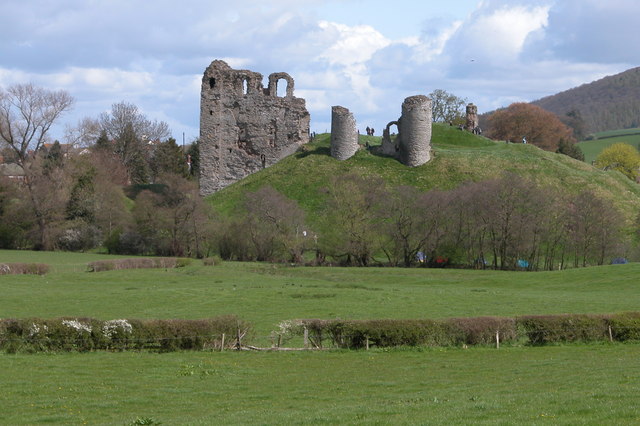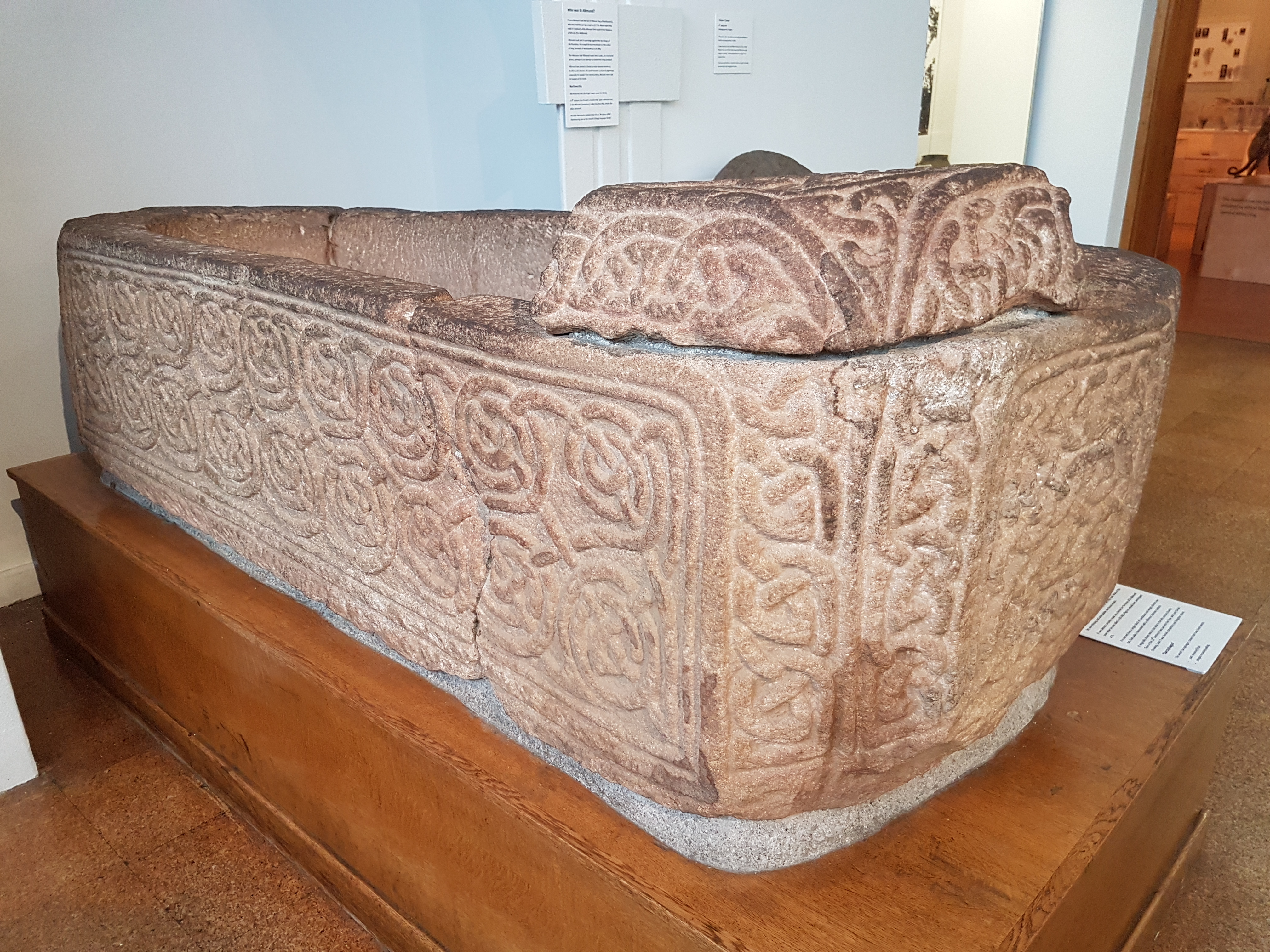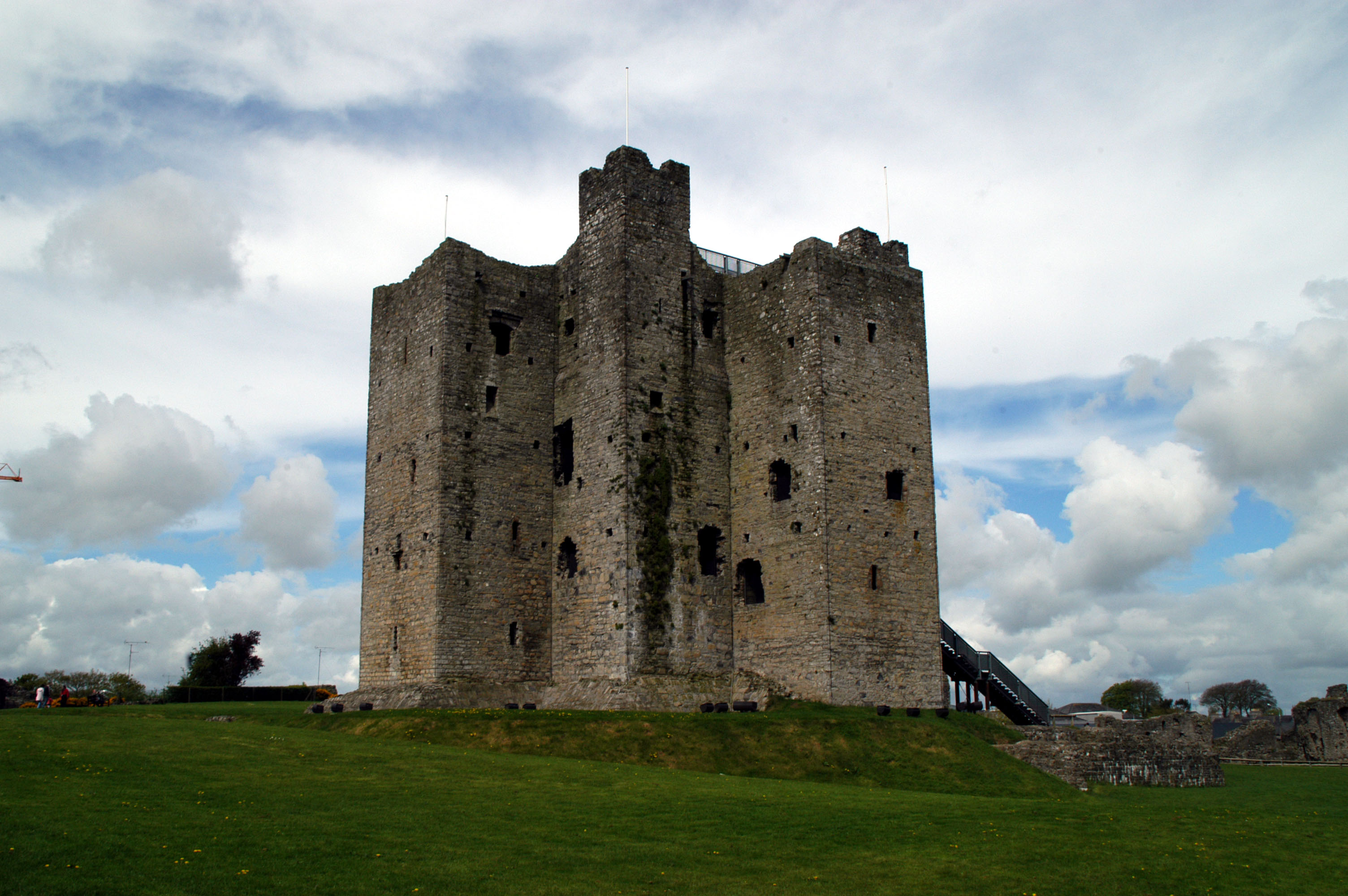|
William Fitzalan, 1st Lord Of Oswestry And Clun
William FitzAlan (died 1210) was a Norman nobleman who lived in Oswestry and Clun, near Shrewsbury, along the medieval Welsh Marches. William was the son of William FitzAlan and Christina. He was the first FitzAlan to hold both the castles of Clun and Oswestry in his own right, and was responsible for the significant expansion of Clun Castle. William was still in his minority in 1160, and Guy Lestrange was appointed as his guardian. William later had two sons, the first also called William FitzAlan and a younger son, John by the daughter of Hugh de Lacy, Lord of Meath Hugh de Lacy, Lord of Meath, 4th Baron Lacy (; before 1135 – 25 July 1186), was an Anglo-Normans, Anglo-Norman landowner and royal office-holder. He had substantial land holdings in Herefordshire and Shropshire. Following his participation in ... and Rohese of Monmouth, whose name is not mentioned in any documents.As stated in Bibliography: Antiquities of Shropshire, vol. 3, By Robert W. Eyton (1856). p. 11 ... [...More Info...] [...Related Items...] OR: [Wikipedia] [Google] [Baidu] |
Oswestry
Oswestry ( ; ) is a market town, civil parish and historic railway town in Shropshire, England, close to the England–Wales border, Welsh border. It is at the junction of the A5 road (Great Britain), A5, A483 road, A483 and A495 road, A495 roads. The town was the administrative headquarters of the Borough of Oswestry until that was abolished in 2009. Oswestry is the third-largest town in Shropshire, following Telford and Shrewsbury. At the 2021 Census, the population was 17,509. The town is from the Welsh border and has a mixed English and Welsh heritage. Oswestry is the largest settlement within the Oswestry Uplands, a designated Natural areas of England, natural area and national character area. Toponym The name ''Oswestry'' is first attested in 1191, as . This Middle English name transparently derives from the Old English personal name and the word ('tree'). Thus the name seems once to have meant 'tree of a man called Ōswald'.A. D. Mills, ''A Dictionary of English Pl ... [...More Info...] [...Related Items...] OR: [Wikipedia] [Google] [Baidu] |
Clun
Clun is a town in south west Shropshire, England, and the Shropshire Hills AONB, Shropshire Hills Area of Outstanding Natural Beauty. The 2011 United Kingdom census, census recorded 680 people living in the town.Combined populations for the two output areas covering the towan/ref> Research by the Campaign for the Protection of Rural England suggests that Clun is one of the "most tranquil" locations in England. History Clun takes its name from the river upon whose banks it stands. Deriving from the Welsh , it shares its very early Common Brittonic, Brythonic root with the two rivers Colne, in Lancashire and Essex, each of which has a town of the same name on its banks. Clun grew up around the site of an Anglo-Saxon church towards the end of the 7th century AD. However, in the surrounding area there was a scattered population at least as early as the Neolithic period, about 5000 years ago. Clun was on the historic drove road where flocks and herds were driven from Wales to the ... [...More Info...] [...Related Items...] OR: [Wikipedia] [Google] [Baidu] |
Shrewsbury
Shrewsbury ( , ) is a market town and civil parish in Shropshire (district), Shropshire, England. It is sited on the River Severn, northwest of Wolverhampton, west of Telford, southeast of Wrexham and north of Hereford. At the 2021 United Kingdom census, 2021 census, the parish had a population of 76,782. It is the county town of the ceremonial county of Shropshire. Shrewsbury has Anglo-Saxons, Anglo-Saxon roots and institutions whose foundations, dating from that time, represent a cultural continuity possibly going back as far as the 8th century. The centre has a largely undisturbed medieval street plan and over 660 Listed buildings in Shrewsbury, listed buildings, including several examples of timber framing from the 15th and 16th centuries. Shrewsbury Castle, a red sandstone fortification, and Shrewsbury Abbey, were founded in 1074 and 1083 respectively by the Normans, Norman Earl of Shrewsbury, Roger de Montgomery. The town is the birthplace of Charles Darwin. It has ... [...More Info...] [...Related Items...] OR: [Wikipedia] [Google] [Baidu] |
Welsh Marches
The Welsh Marches () is an imprecisely defined area along the border between England and Wales in the United Kingdom. The precise meaning of the term has varied at different periods. The English term Welsh March (in Medieval Latin ''Marchia Walliae'') was originally used in the Middle Ages to denote the marches between England and the Principality of Wales, in which Marcher lords had specific rights, exercised to some extent independently of the king of England. In modern usage, "the Marches" is often used to describe those English counties which lie along the border with Wales, particularly Shropshire and Herefordshire, and sometimes adjoining areas of Wales. However, at one time the Marches included all of the historic counties of Cheshire, Shropshire, Herefordshire, Worcestershire and Gloucestershire. Etymology The term ''March'' is from the 13th-century Middle English ''marche'' ("border region, frontier"). The term was borrowed from Old French ''marche'' ("limit, bo ... [...More Info...] [...Related Items...] OR: [Wikipedia] [Google] [Baidu] |
William FitzAlan, Lord Of Oswestry
William FitzAlan (1085–1160) was a nobleman of Breton ancestry. He was a major landowner, a Marcher lord with large holdings in Shropshire, where he was the Lord of Oswestry, as well as in Norfolk and Sussex. He took the side of Empress Matilda during the Anarchy and underwent considerable hardship in the Angevin cause before regaining his lands and former status. William's younger brother, Walter fitz Alan (d. 1177), became ancestor of the royal House of Stuart. Background and early life William was born around 1085. He was the eldest son and heir of Alan fitz Flaad, a Breton noble whose family were closely associated with the sacred environs of Dol-de-Bretagne, close to the border with Normandy and a short distance south-west of the great abbey of Mont Saint-Michel. Alan was a close ally of Henry I of England (1100-1135), who was determined to insert reliable supporters into strategically key areas after the disloyalty of Robert of Bellême, 3rd Earl of Shrewsbury, who ... [...More Info...] [...Related Items...] OR: [Wikipedia] [Google] [Baidu] |
Clun Castle
Clun Castle is a medieval ruined castle in Clun, Shropshire, England. Clun Castle was established by the Norman lord Robert de Say after the Norman invasion of England and went on to become an important Marcher lord castle in the 12th century, with an extensive castle-guard system. Owned for many years by the Fitzalan family, Clun played a key part in protecting the region from Welsh attack until it was gradually abandoned as a property in favour of the more luxurious Arundel Castle. The Fitzalans converted Clun Castle into a hunting lodge in the 14th century, complete with pleasure gardens, but by the 16th century the castle was largely ruined. Slighting, Slighted in 1646 after the English Civil War, Clun remained in poor condition until renovation work in the 1890s. Today the castle is classed as a Grade I listed building and as a Scheduled Monument. It is owned by the Duke of Norfolk, who also holds the title of Baron Clun, and is managed by English Heritage. Architecture ... [...More Info...] [...Related Items...] OR: [Wikipedia] [Google] [Baidu] |
William FitzAlan, 2nd Lord Of Oswestry And Clun
William FitzAlan was a Norman nobleman who lived in Oswestry and Clun near Shrewsbury, along the medieval Welsh Marches. William was the son of William FitzAlan, controlling the castles of Clun and Oswestry and later became the High Sheriff of Shropshire This is a list of sheriffs and high sheriffs of Shropshire The high sheriff, sheriff is the oldest secular office under the Crown. Formerly the high sheriff was the principal law enforcement officer in the county but over the centuries most of t .... Many people today will often confuse William with his father, as their death dates are similar by 5 years. Because of this, it is important to know that this William was married to Mary Erington, the daughter of Thomas. William's father William (d. 1210) married the daughter of Hugh de Lacy, whose name is never mentioned in any documents. When William came to inherit his lands in 1210, King John demanded a fee of 10,000 marks; unable to pay, William was unable to inherit. He only ... [...More Info...] [...Related Items...] OR: [Wikipedia] [Google] [Baidu] |
John Fitzalan, Lord Of Oswestry
John Fitzalan, 3rd Lord of Clun and Oswestry (1200–1240) was a Norman nobleman in the Welsh Marches in the county of Shropshire. Family John succeeded his brother, William Fitz Alan, 2nd Lord of Oswestry and Clun, who died in 1215 without issue. They were sons of William Fitz Alan, 1st Lord of Oswestry and Clun (died c. 1210) and a daughter of Hugh de Lacy, name unknown; The FitzAlans were descendants of Alan fitzFlaad, a Breton. Royal conflicts He was one of the feudal barons who became a target for the anger of King John of England, whose forces attacked Oswestry town and burned it in 1216. John FitzAlan was close to Llywelyn ap Iorwerth until 1217. He was also a representative of the Crown in a dispute between King Henry III of England and the Welsh leader, Llywelyn the Great in 1226. In the same year he mediated between a neighbour, William Pantulf (died 1233), Lord of Wem in Shropshire and Madog ap Gruffydd (died 1236), Lord of Powys and a cousin to Llywe ... [...More Info...] [...Related Items...] OR: [Wikipedia] [Google] [Baidu] |
Hugh De Lacy, Lord Of Meath
Hugh de Lacy, Lord of Meath, 4th Baron Lacy (; before 1135 – 25 July 1186), was an Anglo-Normans, Anglo-Norman landowner and royal office-holder. He had substantial land holdings in Herefordshire and Shropshire. Following his participation in the Anglo-Norman invasion of Ireland, he was granted, in 1172, the lands of the Kingdom of Meath by the Anglo-Norman Henry II of England, King Henry II, but he had to gain control of them. The Lordship of Meath was then the most extensive Liberty (division), liberty in Lordship of Ireland, Ireland. Early life Hugh de Lacy was the son of Gilbert de Lacy (died after 1163) of Ewyas Lacy, Weobley, and Ludlow. He is said to have had a dispute with Josce de Dinan as to certain lands in Herefordshire in 1154. He was in possession of his father's lands before 1163, and in 1165–66 held fifty-eight and three-quarters knight's fees, and had nine tenants without knight service. Career in Ireland In October 1171 Lacy went over with Henry II as pa ... [...More Info...] [...Related Items...] OR: [Wikipedia] [Google] [Baidu] |
Rohese Of Monmouth
Rohese of Monmouth (''Rohese de Monemue'' in Anglo-Norman; born about 1135/1140; died in or near 1180) was a member of the wealthy and powerful Anglo-Norman families in the Welsh Marches.George Edward Cokayne, ''The Complete Peerage; or, A History of the House of Lords and All its Members from the Earliest Times'', Vol. X, Eds. H. A. Doubleday, Geoffrey H. White, & Howard de Walden (London: The St. Catherine Press, Ltd., 1945), p. 348 Early life She was the daughter of Baderon fitzWilliam, lord of Monmouth, and of his wife Rohese de Clare. Rohese's paternal grandfather was William fitzBaderon (c. 1060/65? – before 1138) an Anglo-Norman nobleman of Breton descent, lord of Monmouth c. 1082-1125, mentioned in the 1086 Domesday Book as in charge of Monmouth Castle and parts of the surrounding region. In 1101, Fitzbaderon ensured the consecration of the Monmouth Priory, established in 1075 by his uncle Withenoc, Lord of Monmouth who became a monk. Her paternal great grandmothe ... [...More Info...] [...Related Items...] OR: [Wikipedia] [Google] [Baidu] |
Anglo-Normans
The Anglo-Normans (, ) were the medieval ruling class in the Kingdom of England following the Norman Conquest. They were primarily a combination of Normans, Bretons, Flemings, French people, Frenchmen, Anglo-Saxons and Celtic Britons. After the conquest the victorious Normans formed a ruling class in England, distinct from (although intermarrying with) the native Anglo-Saxon and Celtic populations. Over time, their language evolved from the continental Old Norman to the distinct Anglo-Norman language. Anglo-Normans quickly established control over all of England, as well as Norman invasion of Wales, parts of Wales (the Cambro-Normans, Welsh-Normans). After 1130, parts of southern and eastern Scotland came under Anglo-Norman rule (the Scoto-Norman, Scots-Normans), in return for their support of David I of Scotland#Government and feudalism, David I's conquest. The Anglo-Norman invasion of Ireland from 1169 saw Anglo-Normans and Cambro-Normans conquer swaths of Ireland, becomi ... [...More Info...] [...Related Items...] OR: [Wikipedia] [Google] [Baidu] |
12th-century Births
1 (one, unit, unity) is a number, numeral, and glyph. It is the first and smallest positive integer of the infinite sequence of natural numbers. This fundamental property has led to its unique uses in other fields, ranging from science to sports, where it commonly denotes the first, leading, or top thing in a group. 1 is the unit of counting or measurement, a determiner for singular nouns, and a gender-neutral pronoun. Historically, the representation of 1 evolved from ancient Sumerian and Babylonian symbols to the modern Arabic numeral. In mathematics, 1 is the multiplicative identity, meaning that any number multiplied by 1 equals the same number. 1 is by convention not considered a prime number. In digital technology, 1 represents the "on" state in binary code, the foundation of computing. Philosophically, 1 symbolizes the ultimate reality or source of existence in various traditions. In mathematics The number 1 is the first natural number after 0. Each natural numbe ... [...More Info...] [...Related Items...] OR: [Wikipedia] [Google] [Baidu] |





